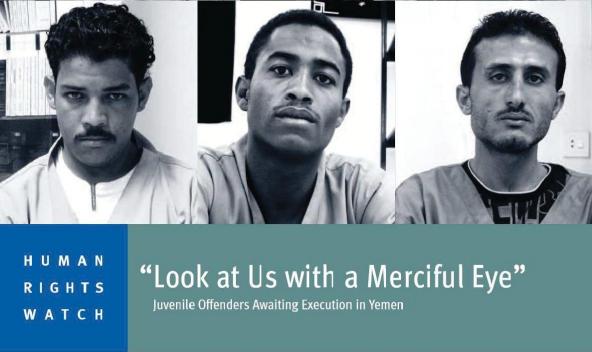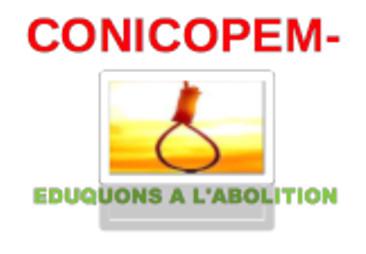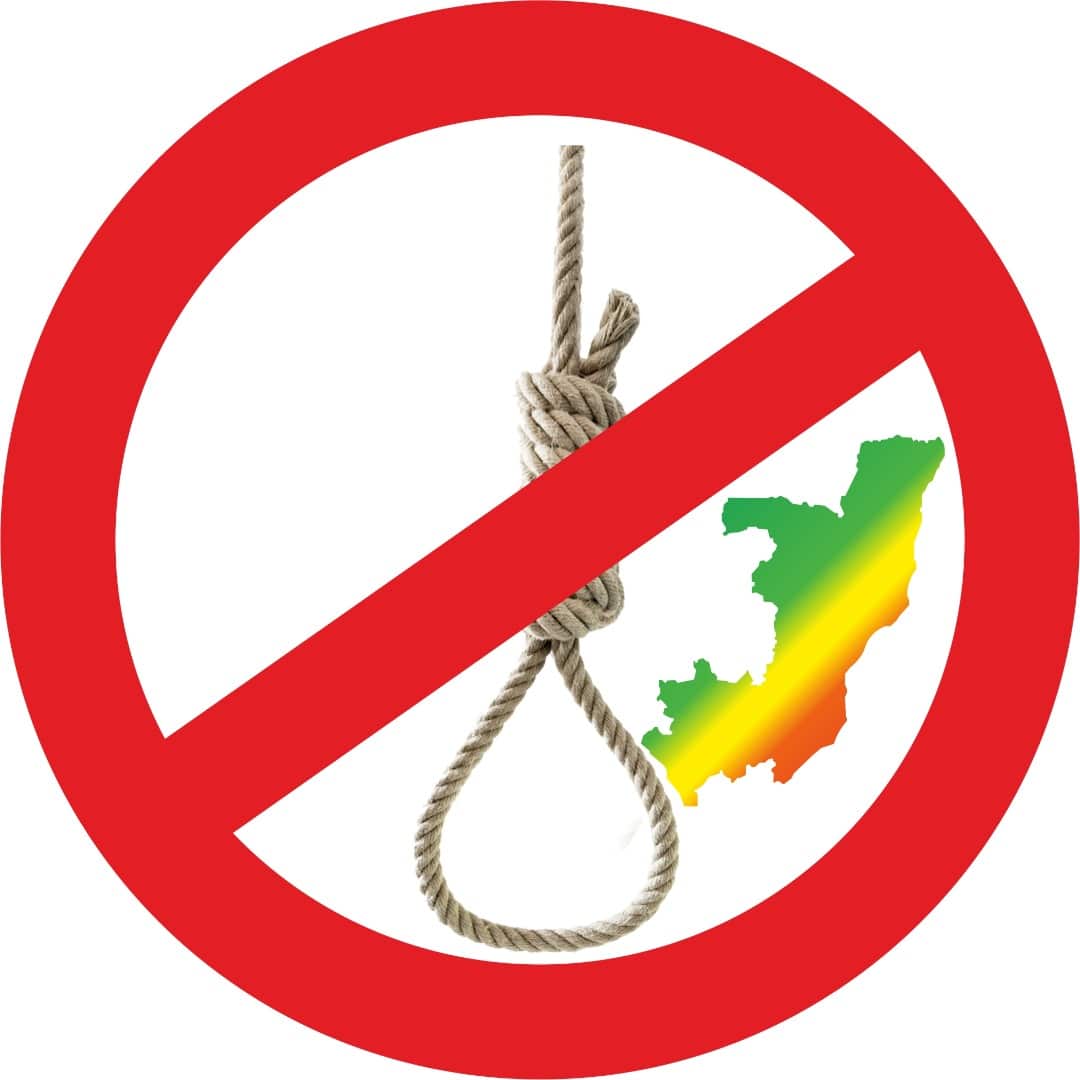Your search “Keep%20the%20Death%20Penalty%20Abolished%20fin%20the%20Philippfines%20%20%20%20%20%20%20%20%20%20/page/www.deathpenaltyindia.com/img/pages/resources/2017Statistics.pdf ”
Article(s)
Jamaica vote illustrates retentionist trend in the Caribbean
on 9 January 2009
Jamaican lawmakers voted to keep capital punishment and the government seems determined to use it. Caribbean abolitionists are battling similar moves across the region.
2009
Jamaica
Public Opinion
Saint Kitts and Nevis
Document(s)
INSECURITY REVEALED: Voices Against the Death Penalty
By World Coalition Against the Death Penalty, on 6 August 2024
2024
Campaigning
World Coalition
frMore details Download [ pdf - 1313 Ko ]
- Document type Campaigning / World Coalition
- Available languages L'INSÉCURITÉ RÉVÉLÉE : Voix contre la peine de mort
Document(s)
Bylaws 2021
By World Coalition Against the Death Penalty, on 9 September 2021
2021
World Coalition
frMore details Download [ pdf - 97 Ko ]
Bylaws of the World Coalition Against the Death Penalty As Amended by the 18 June 2021 General Assembly
- Document type World Coalition
- Available languages Statuts 2021
Document(s)
Bylaws of the World Coalition Against the Death Penalty 2023
By World Coalition Against the Death Penalty, on 22 August 2023
2023
World Coalition
Trend Towards Abolition
frMore details Download [ pdf - 146 Ko ]
- Document type World Coalition
- Themes list Trend Towards Abolition
- Available languages Statuts de la Coalition mondiale contre la peine de mort 2023
Article(s)
China reduces the number of crimes punishable by death to 46, but keeps drug trafficking in the list
By Aurélie Plaçais, on 7 October 2015
China removes nine non-violent and rarely used criminal offenses from capital punishment.
2015
China
Drug Offenses
Document(s)
Women and Death Penalty Factsheet – World Day 2023
By World coalition against the death penalty, on 15 August 2023
2023
World Coalition
Gender
frMore details Download [ pdf - 424 Ko ]
- Document type World Coalition
- Themes list Gender
- Available languages Faits et chiffres Les femmes et la peine de mort - 21e journée mondiale contre la peine de mort
Document(s)
Advisory on the Increased Vulnerabilty of Women Migrant Workers on Death Row
By Commission on Human Rights of the Philippines, on 3 December 2021
2021
Government body report
Drug Offenses
Legal Representation
Philippines
Women
frMore details Download [ pdf - 1457 Ko ]
The Commission on Human Rights of the Philippines issues this advisory to bring the Philippines’ attention to the heightened vulnerabilities of women Overseas Filipino Workers (OFWs).
- Document type Government body report
- Countries list Philippines
- Themes list Drug Offenses / Legal Representation / Women
- Available languages Avis sur la vulnérabilité accrue des travailleuses migrantes dans le couloir de la mort
Document(s)
Capital and punishment: Resource scarcity increases endorsement of the death penalty
By Arizona State University (ASU), on 1 January 2018
2018
Academic report
More details See the document
A new study by an interdisciplinary team of Arizona State University psychology researchers has found a link between the actual and perceived scarcity of resources and support for capital punishment. The study discovered that countries with greater resource scarcity were more likely to have a death penalty, as were U.S. states with lower per capita income.
- Document type Academic report
- Themes list Death Penalty, Financial cost,
Document(s)
Does care have to be at the periphery if crime is at the centre? A conversation that unspools the various threads tying feminism with crime.
By The Third Eye, on 15 February 2024
2024
Article
Gender
Women
More details See the document
Published on January 30, 2024.
The Third Eye invited Maitreyi Misra of Project 39A to help us think through our central idea: why do we need a feminist way of looking at crime, and how does that help the larger goal of social justice?
Project 39A is inspired by Article 39-A of the Indian Constitution, a provision that furthers the intertwined values of equal justice and equal opportunity by removing economic and social barriers. Using empirical research to re-examine practices and policies in the criminal justice system, Project 39A aims to trigger new conversations on legal aid, torture, forensics, mental health in prisons, and the death penalty.
- Document type Article
- Themes list Gender / Women
Document(s)
Death Penalty in Pakistan
By Justice Project Pakistan, on 10 October 2022
2022
NGO report
Pakistan
More details See the document
The implementation of capital punishment has seen substantial shifts over the course of the past decade. During the period from the end of a moratorium on executions in December 2014 to August 2019, an estimated 1,800 death sentences were imposed across the entire court system and 520 people were executed. Various amendments to Pakistan’s criminal law over the past several decades have resulted in a list of 33 offenses, most of which are far removed from the definition of the “most serious crimes” under international law. A full list of offences is attached at the end of the report.
- Document type NGO report
- Countries list Pakistan
Document(s)
Addressing the Gender Dimension of the Death Penalty: Coaction Between Parliamentarians and Civil Society
By World Coalition Against the Death Penalty, on 10 September 2021
2021
Working with...
Women
frMore details Download [ pdf - 311 Ko ]
Created on the occasion of the 19th World Day Against the Death Penalty (10/10/21), this tool’s aim is to provide practical advice and concrete suggestions to civil society organizations who wish/ are already collaborating with parliamentarians to end the death penalty and bring attention to women sentenced to death.
- Document type Working with...
- Themes list Women
- Available languages Traiter la dimension de genre de la peine de mort : Collaboration entre les parlementaires et la société civile
Document(s)
Helpful Hints and Advice on Online Harassment
By World Coalition against the Death Penalty , on 10 August 2021
2021
Campaigning
Public Opinion
frMore details Download [ pdf - 165 Ko ]
Online advocacy efforts by human rights organizations face increasingly dangerous threats. In this short guide, we elaborate a few helpful hints and
advice, as well as list a compilation of resources that organizations can refer to handle online harassment.
- Document type Campaigning
- Themes list Public Opinion
- Available languages Astuces et conseils utiles face au harcèlement en ligne
Document(s)
Imposing a Cap on Capital Punishment
By Adam M. Gershowitz / Missouri Law Review 72(1), 73-124., on 1 January 2007
2007
Article
United States
More details See the document
This article argues that because prosecutors have discretion to seek the death penalty in too many cases, they lack the incentive to police themselvesand choose carefully. Put simply, because there are few legal constraints — and virtually no political constraints — on the sheer number of cases in which prosecutors can pursue the death penalty, the Government is not under sufficient pressure to limit its use of capital punishment to only the most heinous cases. As a result, two things happen. First, the death penalty is sought and meted out in some cases, which though terrible, are no worse than the thousands of other murder cases in which prosecutors pursue only life imprisonment. Second, because prosecutors file too many capital cases, the criminal justice system lacks the resources to focus sufficient attention on each one.
- Document type Article
- Countries list United States
- Themes list Arbitrariness, Most Serious Crimes,
Document(s)
List of signatories to the Second Optional Protocol by region
By World Coalition Against the Death Penalty, on 1 January 2014
2014
Lobbying
frMore details See the document
List of states that have signed and/or ratified the Second Optional Protocol to the International Covenant on Civil and Political Rights. Classifyied by region of the world as of 1st July 2011.
- Document type Lobbying
- Themes list Networks,
- Available languages Liste des Etats signataires du deuxième Protocole facultatif par région
Document(s)
Sri Lankan expert needed to conduct study on the death penalty – Terms of reference
By World Coalition Against the Death Penalty, on 23 December 2021
2021
World Coalition
More details Download [ pdf - 83 Ko ]
- Document type World Coalition
Document(s)
Condemning the Other in Death Penalty Trials: Biographical Racism, Structural Mitigation, and the Empathic Divide
By Craig Haney / DePaul Law Review, on 1 January 2004
2004
Article
United States
More details See the document
This article analyses racial discrimination in the administration of the death penalty – despite their importance to the critical debate over the fairness of capital punishment – are not able to address the effects of many of the most pernicious forms of racism in American society. In particular, they cannot examine “biographical racism” – the accumulation of race-based obstacles, indignities, and criminogenic influences that characterizes the life histories of so many African-American capital defendants. Second, I propose that recognizing the role of this especially pernicious form of racism in the lives of capital defendants has significant implications for the way we estimate fairness (as opposed to parity) in our analyses of death sentencing. Chronic exposure to race-based, life-altering experiences in the form of biographical racism represents a profoundly important kind of “structural mitigation.” Because of the way our capital sentencing laws are fashioned, and the requirement that jurors must engage in a “moral inquiry into the culpability” of anyone whom they might sentence to die, this kind of mitigation provides a built-in argument against imposing the death penalty on African-American capital defendants. It is structured into their social histories by the nature of the society into which they have been born.
- Document type Article
- Countries list United States
- Themes list Discrimination,
Document(s)
The Prevalence and Potential Causes of Wrongful Conviction by Fingerprint Evidence.
By Simon A. Cole / Golden Gate University Law Review, on 1 January 2006
2006
Article
United States
More details See the document
As the number of post-conviction DNA exonerations mounted and the Innocence Project undertook to treat these exonerations as a data set indicating the principal causes of wrongful conviction, the absence of fingerprint cases in that data set could have been interpreted as soft evidence that latent print evidence was unlikely to contribute to wrongful convictions. That situation changed in 2004 when Stephan Cowans became the first – and thus far the only – person to be exonerated by DNA evidence for a wrongful conviction in which fingerprint evidence was a contributing factor. Cowans’s wrongful conviction in Boston in 1997 for the attempted murder of a police officer was based almost solely on eyewitness identification and latent print evidence. The Cowans case not only provided dramatic additional support for the already established proposition that wrongful conviction by fingerprint was possible, it also demonstrated why the exposure of such cases, when they do occur, is exceedingly unlikely. These points have already been made in a comprehensive 2005 study of exposed cases of latent print misattributions. In this article, I discuss some additional things that we have learned about the prevalence and potential causes of wrongful conviction by fingerprint in the short time since the publication of that study.
- Document type Article
- Countries list United States
- Themes list Innocence,

Article(s)
Fiji abolishes death penalty for all crimes through amendment to military law
By Auréie Plaçais, on 23 February 2015
On 9 February 2015, Attorney General Aiyaz Sayed-Khaiyum introduced in parliament the Republic of Fiji Military Forces amended Bill 2015, a one page bill to abolish the death penalty provision.
2015
Fiji
Document(s)
The Failed Failsafe: The Politics of Executive Clemency
By Cathleen Burnett / Texas Journal on Civil Liberties and Civil Rights, on 1 January 2003
2003
Article
United States
More details See the document
This article discusses the role of executive clemency in light of the current political environment. Attending to the political aspects of the capital litigation process gives insight into the trends in the use of executive clemency
- Document type Article
- Countries list United States
- Themes list Clemency,

Article(s)
“Look at us with a merciful eye”
By Human Rights Watch, on 5 March 2013
Human Rights Watch is launching a 30-page report on juvenile offenders awaiting execution on Yemen’s death row.
2013
Juveniles
Yemen
Yemen
Document(s)
Mentally Ill Prisoners on Death Row: Unsolved Puzzles for Courts and Legislatures
By Richard J. Bonnie / Catholic University Law Review, on 1 January 2004
2004
Article
United States
More details See the document
This paper focuses on the problems relating to mental illness or other mental disabilities that arise after sentencing, where the underlying values at stake are the dignity of the condemned prisoner and the integrity of the law.
- Document type Article
- Countries list United States
- Themes list Mental Illness, Intellectual Disability,
Document(s)
Race Discrimination and the Legitimacy of Capital Punishment: Reflections on the Interaction of Fact and Perception
By George Woodworth / David C. Baldus / DePaul Law Review, on 1 January 2004
Article
United States
More details See the document
The authors analyze data concerning race discrimination in capital sentencing and data regarding how the public perceives this issue. They conclude that race discrimination is not an inevitable feature of all death penalty systems. Before Furman v. Georgia was decided in 1972, widespread discrimination against black defendants marred the practice of capital punishment in America. According to studies cited by the authors, race-of-defendant discrimination has lessened since Furman. However, race-of-victim discrimination remains a significant factor in sentencing; defendants with white victims are at a significantly higher risk of being sentenced to death and executed than are defendants whose victims are black, Asian, or Hispanic. From 1976 to 2002, the proportion of white-victim cases among all murder and non-negligent manslaughter cases has ranged between 51% and 56%. However, 81% of executed defendants had white victims. Polling data indicate that the general public perceives only one form of race discrimination in the use of the death penalty – race-of-defendant discrimination – and that the public and elected officials may see racial discrimination as inevitable in the criminal justice system. Race of victim discrimination is a pervasive problem in the death penalty system. However, race discrimination is not inevitable. If serious controls were enacted to address this problem (such as those imposed in a few states) a fairer system could result.
- Document type Article
- Countries list United States
- Themes list Discrimination,
Document(s)
International Law and the Moral Precipice: A Legal Policy Critique of the Death Row Phenomenon
By David A Sadoff / Tulane Journal of International and Comparative Law, on 1 January 2008
2008
Article
More details See the document
This article provides an in-depth analysis of death row phenomenon.
- Document type Article
- Themes list Death Row Phenomenon,
Document(s)
Dead Innocent: The Death Penalty Abolitionist Search for a Wrongful Execution.
By Jeffrey L. Kirchmeier / Tulsa Law Review, on 1 January 2006
2006
Article
United States
More details See the document
This article examines the debate about whether or not an innocent person has been executed in the United States. The article begins by discussing several famous historical claims of wrongful execution, including Sacco & Vanzetti, the Rosenbergs, and Bruno Hauptmann. Then, the article addresses some recent claims of wrongful executions, including the case of Larry Griffin and the impact of a 2006 DNA test in the Roger Coleman case. The article evaluates why some innocence claims attract more attention than others. By recognizing two obstacles in wrongful execution claims and by establishing five lessons for gaining media attention, the article uses its historical analysis to extract strategy lessons for death penalty abolitionists. Finally, the article weighs arguments regarding the pros and cons of an abolitionist strategy that focuses on proving the innocence of executed individuals. The article concludes that wrongful execution claims provide an important argument for abolitionists, but such claims should not be presented as the main or only problem with the death penalty.
- Document type Article
- Countries list United States
- Themes list Innocence,
Document(s)
Averting Mistaken Executions by Adopting the Model Penal Code’s Exclusion of Death in the Presence of Lingering Doubts
By Margery Malkin Koosed / Northern Illinois Law Review, on 1 January 2001
2001
Article
United States
More details See the document
This article considers community views on the risk of mistaken executions and how sentencing juries respond to such risks. It explores the present state of the law surrounding risk-taking regarding lingering or residual doubt, and finds the law in a state of denial. Though the risk may be there, and jurors may see it, this is not something they are directed, or even invited, to consider. Some jurors may deny effect to the risk they see, believing it is not a proper subject of their attention. Others will consider it, yet wonder whether they should. This inconsistent treatment, and dissonance from what the public wants and justifiably expects from its legal system, is largely a product of the United States Supreme Court’s 1988 decision in Franklin v. Lynaugh. Arguably misread, and at least misguided, the Court’s decision on considering lingering or residual doubts about guilt as a mitigating factor at the penalty phase has retarded development of meaningful ways to avert mistaken executions.
- Document type Article
- Countries list United States
- Themes list Networks,
Document(s)
Retribution and Redemption in the Operation of Executive Clemency
By Elizabeth Rapaport / Chicago Kent Law Review, on 1 January 2000
2000
Article
United States
More details See the document
In this Article, my goal is to raise doubts about the adequacy of the neo-retributive theory of clemency and stimulate reappraisal and development of what I will call the “redemptive” perspective. To this end I will present an exposition and critique of neo-retributive theory of clemency.
- Document type Article
- Countries list United States
- Themes list Retribution, Clemency,
Document(s)
International Legal Trends and the Mandatory Death Penalty in the Commonwealth Caribbean
By Saul Lehrfreund / Oxford University Commonwealth Law Journal, on 1 January 2001
2001
Article
More details See the document
Until the landmark decision of the Eastern Caribbean Court of Appeal in Hufhes and Spense v The Queen, the convetional wisdom was that the mandatory imposition of the death penalty could not be challenged in Commonwealth Caribbean countries as unconstitutional and that, in any event, the savings clauses contained in the constitutions would prevent any such challenge. As a consequence, the constitutional courts in the Commonwealth Caribbean are now being asked to consider a number of specific issues in relation to the mandatory death penalty: first, whether it is constitutional; and second, whether any chanllenges to the mandatory death penalty are barred by the savings clauses found to a varying degree, within each Caribbean constitution of and implications for global and regional developments are highly significant.
- Document type Article
- Themes list Mandatory Death Penalty,
Document(s)
EU Policy on Death Penalty
By Council of Europe, on 1 January 2014
2014
Arguments against the death penalty
More details See the document
This page contains videos and documents on issues dealing with the death penalty.
- Document type Arguments against the death penalty
Document(s)
Leaflet – 2020 World Day
By World Coalition Against the Death Penalty, on 8 September 2020
2020
Academic report
frMore details Download [ - 0 Ko ]
2020 World Day 8-page leaflet
- Document type Academic report
- Themes list Fair Trial, World Coalition Against the Death Penalty, Death Penalty,
- Available languages Brochure - Journée mondiale 2020
Document(s)
China Executed 2,400 People in 2013, Dui Hua
By Dui Hua Human Rights Journal, on 1 January 2014
2014
Article
China
More details See the document
The Dui Hua Foundation estimates that China executed approximately 2,400 people in 2013 and will execute roughly the same number of people in 2014. Annual declines in executions recorded in recent years are likely to be offset in 2014 by the use of capital punishment in anti-terrorism campaigns in Xinjiang and the anti-corruption campaign nationwide.
- Document type Article
- Countries list China
- Themes list Statistics,
Document(s)
Stories of Victims of Terrorism
By World Coalition Against the Death Penalty, on 1 January 2016
2016
Multimedia content
frMore details Download [ pdf - 142 Ko ]
Together with AfVT, the World Coalition has developed this two-page note explaining why some victims of terrorism are against the death penalty.
- Document type Multimedia content
- Themes list Murder Victims' Families, Terrorism,
- Available languages Témoignages de victimes du terrorisme
Document(s)
Database Center for North Korean Human Rights – Briefings on public execution
By Database Center for North Korean Human Rights, on 8 September 2020
2020
Article
Republic of Korea
More details See the document
NKDB hosts a monthly English language briefing and discussion on North Korean human rights every month with embassy officials, NGO staff, and NKDB staff as guests
- Document type Article
- Countries list Republic of Korea
- Themes list World Coalition Against the Death Penalty, Death Penalty, Country/Regional profiles,

Member(s)
Bahrain Institute for Rights and Democracy (BIRD)
on 29 November 2023
The Bahrain Institute for Rights and Democracy (BIRD) is a non-profit organisation focusing on advocacy, education and awareness for the calls of democracy and human rights in Bahrain. BIRD was established in 2013 after co-founder and current Director of Advocacy, Sayed Alwadaei, fled Bahrain after being imprisoned and tortured following participation in the 2011 democratic […]
2023
Bahrain
Document(s)
A Tale of Two (and Possibly Three) Atkins: Intellectual Disability and Capital Punishment Twelve Years after The Supreme Court’s Creation of a Categorical Bar
By John H. Blume / Sheri Lynn Johnson / William and Mary Bill of Rights Journal, on 8 September 2020
2020
Article
United States
More details See the document
The article, with three co-authors, examines empirically the capital cases decided by the lower courts since the United States Supreme Court created the categorical ban against the execution of persons with intellectual disability twelve years ago in the Atkins decision.
- Document type Article
- Countries list United States
- Themes list Mental Illness,
Member(s)
ACAT Liberia
on 30 April 2020
Action by Christians for the Abolition of Torture in Liberia (ACAT Liberia) is an NGO based in Liberia. Created in 2003 and accredited in 2004, it fights to have a society free of torture and death penalty. To reach these goals, their main actions are: – Education and awareness, – advocacy, assistance, – cooperation, – […]
2020
Liberia

Member(s)
Society for Human Rights and Development Organisation (SHRDO)
on 30 April 2020
The Society for Human Rights and Development Organisation (SHRDO) – Formally MRU youth parliament – purpose is for peace & development and its activities are base on Sub Regional Peace Consolidations, Peace Promotion & Peace Maintenance across Sierra Leone, Liberia, Guinea & Ivory Coast by the Youngsters/ Youth Leaders themselves that agitates for regional reintegration, […]
Sierra Leone

Member(s)
Quaker United Nations Office, Geneva
on 30 April 2020
The Quaker United Nations Office (QUNO) serves as a Quaker presence at the United Nations (UN) in Geneva and New York. QUNO represents Quaker concerns at the international level, under the auspices of the Friends World Committee for Consultation (Quakers), the international Quaker body which has General Consultative Status with the UN. In addition to […]
Switzerland

Member(s)
Civil Rights and Social Justice Society (CRSJS)
on 30 April 2020
The Civil Rights and Social Justice Society (CRSJS) is a human rights NGO registered under the Travancore Cochin, Literary, Scientific and Charitable Societies Registration Act, 1955 in Kerala State, India in the year 1997. The members of CRSJS are persons committed to the promotion and protection of human rights in all spheres. However the main […]
India
Member(s)
Children Education Society (CHESO)
on 30 April 2020
The mandate of Children Education Society (CHESO) is: – To combat causes of most vulnerable children including children’s rights violations, poor governance, HIV/AIDS, poverty, climate change and reinforce realization of the children’s right to education -To eliminate bad policies and laws subjecting children to vulnerability – To end human rights violations subjecting children to vulnerability […]
United Republic of Tanzania
Member(s)
Forum Marocain pour la Vérité et la Justice
on 30 April 2020
Le Forum marocain pour la vérité et la justice (FMVJ) was created by victims of the “years of lead” between 1956 and 1999. It defines itself as a human rights association dedicated to defending the rights of victims of forced disappearances, arbitrary detention, torture and exile, and their families. The FMVJ seeks to establish the […]
Morocco

Member(s)
Comité des Observateurs des Droits de l’Homme (CODHO)
on 30 April 2020
On 1 July 1997 a group of lawyers, economists and political scientists from the Democratic Republic of Congo (DRC) held a meeting following the massacre of children by militiamen in North Kivu in the east of the country. Revolted by this unspoken tragedy, they decided to set up the Committee of Human Rights Monitors (Codho). […]
Democratic Republic of the Congo

Member(s)
Center for Prisoner’s Rights (CPR)
on 30 April 2020
The Center for Prisoners’ Rights (CPR) was established in March 1995 as the first Japanese NGO specializing in prison reform. CPR‘s goal is to reform Japanese prison conditions in accordance with international human rights standards and to abolish the death penalty. The organisation researches human rights violations in Japanese prisons and makes its finding known […]
Japan

Member(s)
Culture pour la Paix et la Justice (CPJ)
on 30 April 2020
The association Culture for Peace and Justice (CPJ) was founded in Kinshasa at the end of 1990s by a lawyer, Liévin Ngondji, and a law student, Molisho Ndarabu Eulethère. At a time of war, they wanted to fight against the practice of the Military court, an exceptional court established in 1997 that pronounced numerous death […]
Democratic Republic of the Congo

Member(s)
RADHOMA
on 30 April 2020
The network of human rights organisations and activists for the abolition of the death penalty (RADHOMA) is an abolitionist NGO of the DRC. 1. Fundation and headquarters Created on 10 October 2005 by member associations, the organization is a member of the Congolese Coalition Against the Death Penalty and of the World Coalition Against the Death […]
Democratic Republic of the Congo

Member(s)
California People of Faith
on 30 April 2020
The California People of Faith (CPF) is a nonprofit organization 501, based in Los Angeles in the United States. CPF is an interfaith organization which advocates for alternatives to the death penalty in California and throughout the United States. CPF coordinates grassroots affords via chapters located throughout California, organizing Faith-based communities to resist corrosive temptation […]
United States

Member(s)
KontraS (Commission for the Disapeared and Victims of Violence)
on 30 April 2020
KontraS (Commission for the Disappeared and Victims of Violence) in Indonesia is a human rights NGO that deals with human rights issues in Indonesia, particularly civil and political rights. Abolition of the death penalty is one of its advocacy objectives. KontraS is a member of regional and national networks: Anti Death Penalty Asian Network (ADPAN) […]
Indonesia

Member(s)
Adaleh Center for Human Rights Studies
on 30 April 2020
The Adaleh Center for Human Rights Studies is a non-governmental, non-profit organization founded on September 2003 and based in Amman, Jordan. Its mission is to enforce human rights values in Jordan and the Arab world, through building the capacity of non-governmental organizations and practitioners working in the field of human rights, democracy and justice. The […]
Jordan
Member(s)
Bahrain Centre for Human Rights
on 30 April 2020
Bahrain

Member(s)
Ordre des Barreaux Francophones et Germanophones de Belgique – OFBG
on 30 April 2020
The French- and German-speaking bars association (Ordre des barreaux francophones et germanophone, OBFG) brings together 10 French-speaking bar association and one German-speaking. It is regulated by Belgian penal laws.
Belgium
Member(s)
Iraqi Coalition against Death Penalty
on 30 April 2020
The Iraqi Coalition against Death Penalty (first called the Iraqi Alliance for the Prevention of the Death Penalty) promotes and enhances the values of human rights among Iraqi people. The Coalition works to define the culture of human rights in the judicial system. It also observes and documents violations of human rights in Iraq to […]
Iraq

Member(s)
Hope and Justice
on 30 April 2020
Hope and Justice is a small association founded after a plea for help from two prisoners sentenced to death, Justin Fuller and Carl Brooks. The initial aim was to save their lives by raising awareness among the greatest number of people possible of their cases and a fund for their defence. Justin Fuller was executed […]
Belgium

Member(s)
Coalition nigérienne contre la peine de mort
on 30 April 2020
Niger

Member(s)
DITSHWANELO – The Botswana Centre for Human Rights
on 30 June 2023
DITSHWANELO – The Botswana Centre for Human Rights was established in 1993 and since then has remained the only organisation in Botswana dealing with varied aspects of human rights. We work to advocate for changes in laws, policies and practices, and to raise public awareness of rights and responsibilities. We also provide paralegal services to […]
2023
Botswana

Member(s)
Coalition Congolaise Contre la Peine de Mort (CCPM)
on 27 February 2023
In their desire to promote the abolition of the death penalty in the Republic of Congo, Congolese abolitionists have formed a coalition called the Coalition Congolaise Contre la Peine de Mort, Congolese Coalition Against the Death Penalty (CCCPM). This coalition was created on October 02, 2019 in Brazzaville. Its main objectives are the promotion of […]
2023
Congo
Document(s)
Grace and Justice on Death Row
By Brian W. Stolarz / Skyhorse Publishing, on 1 January 2016
2016
Book
United States
More details See the document
This book tells the story of Alfred Dewayne Brown, a man who spent over twelve years in prison (ten of them on Texas’ infamous Death Row) for a high-profile crime he did not commit, and his lawyer, Brian Stolarz, who dedicated his career and life to secure his freedom. The book chronicles Brown’s extraordinary journey to freedom against very long odds, overcoming unscrupulous prosecutors, corrupt police, inadequate defense counsel, and a broken criminal justice system. The book examines how a lawyer-client relationship turned into one of brotherhood.Grace And Justice On Death Row also addresses many issues facing the criminal justice system and the death penalty – race, class, adequate defense counsel, and intellectual disability, and proposes reforms.Told from Stolarz’s perspective, this raw, fast-paced look into what it took to save one man’s life will leave you questioning the criminal justice system in this country. It is a story of injustice and redemption that must be told.
- Document type Book
- Countries list United States
- Themes list Innocence, Death Row Conditions, Death Penalty,
Document(s)
Identifying and (Re)formulating Prophylactic Rules, Safe Harbors, and Incidental Rights in Constitutional Criminal Procedure
By Susan R. Klein / Michigan Law Review, on 1 January 2001
2001
Article
United States
More details See the document
The Miranda conundrum runs something like this: If the Miranda decision represents true constitutional interpretation, and all unwarned statements taken during custodial interrogation are compelled” within the meaning of the self-incrimination clause, the impeachment and “”fruits”” exceptions to Miranda should fall. If it is not true constitutional interpretation, than the Court has no business reversing state criminal convictions for its violation. I offer here what I hope is a satisfying answer to this conundrum, on both descriptive and normative levels, that justifies not only Miranda but a host of similar Warren, Burger, and Rehnquist Court decisions as well. In Part I, I introduce and define the terms “”constitutional prophylactic rule,”” “”constitutional safe harbor rule,”” and “”constitutional incidental right,”” and attempt to legitimate their use. I further demonstrate that constitutional criminal procedure is so flush with such prophylactic and safe harbor rules and incidental rights that trying to eliminate them now, by either reversing a large number of criminal procedure cases or “”constitutionalizing”” all of those holdings, would do more harm than good. I propose that we accept the fact that these rules and rights are a fixed part of our constitutional landscape, and focus instead on minimizing their risks and maximizing their benefits”
- Document type Article
- Countries list United States
- Themes list Fair Trial,
Document(s)
Anti-death penalty group launches handbook
By Manila Bulletin, on 1 January 2018
2018
Article
Philippines
More details See the document
The Catholic Bishops’ Conference of the Philippines-Episcopal Commission on Prison Pastoral Care, together with the Free Legal Assistance Group, the Commission on Human Rights, and other members of the Anti-Death Penalty Task Force, have launched a handbook opposing the capital punishment and the drug war.
- Document type Article
- Countries list Philippines
- Themes list Drug Offences, Death Penalty,
Document(s)
Furman Fundamentals
By Corinna Barrett Lain / Washington Law Review, on 1 January 2007
2007
Article
United States
More details See the document
For the first time in a long time, the Supreme Court’s most important death penalty decisions all have gone the defendant’s way. Is the Court’s new found willingness to protect capital defendants here to stay? Or is it a passing fancy that will dissipate in less hospitable times? At first glance, history allows for optimism. Furman v. Georgia, the 1972 landmark that invalidated the death penalty, provides a seemingly perfect example of the Court’s ability and inclination to protect capital defendants when no one else will. Furman looks countermajoritarian, scholars have claimed it was countermajoritarian, and even the Justices saw themselves as playing a heroic, countermajoritarian role in the case. But the lessons of Furman are not what they seem. Rather than proving the Supreme Court’s ability to withstand majoritarian influences, Furman teaches the opposite – that even in its more countermajoritarian moments, the Court never strays far from dominant public opinion, tending instead to reflect the social and political movements of its time. This Article examines the historical context of Furman v. Georgia and its 1976 counterpart, Gregg v. Georgia, to highlight a fundamental flaw in the Supreme Court’s role as protector of minority rights: its inherently limited inclination and ability to render countermajoritarian change. In theory, the Court might protect unpopular minorities, but in practice it is unlikely to do so unless a substantial (and growing) segment of society supports that protection. Even then, Furman reminds us that the Court’s “help” may do more harm than good. If the past truly is a prologue, Furman portends that the Court’s current interest in restricting the death penalty will not last forever. Like the fair-weather friend, the Court’s protection will likely be there in good times but gone when needed the most.
- Document type Article
- Countries list United States
- Themes list Networks,
Document(s)
Arcs of Global Justice
By Oxford University Press / Margaret M. Guzman / Diane Marie Amann, on 1 January 2018
2018
Book
More details See the document
This work honours William A. Schabas and his career with essays by luminary scholars and jurists from Africa, Asia, Europe, and the Americas. The essays examine contemporary, historical, cultural, and theoretical aspects of the many arcs of global justice with which Professor Schabas has engaged, in fields including public international law, human rights, transitional justice, international criminal law, and capital punishment.Table of Contents (regarding information on the death penalty)II. Capital PunishmentChapter 5: International Law and the Death Penalty: A Toothless Tiger, or a Meaningful Force for Change?Sandra L. BabcockChapter 6: The UN Optional Protocol on the Abolition of the Death PenaltyMarc BossuytChapter 7: The Right to Life and the Progressive Abolition of the Death PenaltyChristof Heyns and Thomas Probert and Tess BordenChapter 8: Progress and Trend of the Reform of the Death Penalty in ChinaZhao Bingzhi
- Document type Book
- Themes list International law, Death Penalty,
Document(s)
Rethinking the Study of Miscarriages of Justice: Developing a Criminology of Wrongful Conviction
By Richard A. Leo / Journal of Contemporary Criminal Justice, on 1 January 2005
2005
Article
United States
More details See the document
This article provides a brief history of the study of miscarriages of justice in America. It analyzes the field of wrongful conviction scholarship as three distinct genres: the big-picture studies, the specialized-causes literature, and the true-crime genre. It also analyzes what these literatures have contributed to knowledge about miscarriages as well as their limitations. This article attempts to rethink the study of miscarriages of justice to systematically develop a more sophisticated, insightful, and generalizable criminology of wrongful conviction.
- Document type Article
- Countries list United States
- Themes list Innocence,
Document(s)
Gall, Gallantry, and the Gallows: Capital Punishment and the Social Construction of Gender, 1840-1920
By Gender and Society / Alana van Gundy-Yoder, on 1 January 2008
2008
Article
United States
More details See the document
In this article, the authors examine how the debate over women’s executions during the nineteenth and early twentieth century funneled and in various ways processed the contrary demands of gender and capital justice. They show how encounters with capital punishment both reflected and reinforced dominant interpretations of womanhood and as such contributed to the intricate web of normative strictures that affected all women at the time. At the same time, however, the often heated debates that accompanied such cases pried open some of the contradictions inherent in the dominant interpretations and, as a result, came to challenge the boundaries that separated not only women from men but also women from each other. Rather than viewing gender as a unidirectional influence on capital punishment, the authors argue that gender is best approached as an evolving social category that gets reconstructed, modified, and transformed whenever it is implicated in social practices and public debates.
- Document type Article
- Countries list United States
- Themes list Women,
Document(s)
The Future of the Federal Death Penalty
By Rory K. Little / Ohio Northern University Law Review, on 1 January 2000
2000
Article
United States
More details See the document
On May 16, 2001, the federal government carried out its first execution for a criminal offense in over 38 years (Timothy McVeigh). This article (part of a symposium issue) examines recent developments in the administration of the federal death penalty, in the legislative, judicial, and executive (Department of Justice) arenas. While not an abolitionist, the author expresses misgivings about federal capital punishment as it is currently administered, updating statistics regarding racial and geographic disparity from his 1999 article “The Federal Death Penalty: History and Some Thoughts About the Department of Justice’s Role,”. The article also explains “What the Supreme Court Got Wrong in Jones,” (1999). Finally, the international implications of the first execution by the federal government in two generations are explored. No longer can the United States shift its internationally isolated position regarding capital punishment onto its constituent states under a theory of independent federalism. Note: This is a description of the paper and not the actual abstract.
- Document type Article
- Countries list United States
- Themes list Networks,
Document(s)
Putting Them There, Keeping Them There, and Killing Them: An Analysis of State-Level Variations in Death Penalty Intensity
By William S. Lofquist / Iowa Law Review, on 1 January 2002
2002
Article
United States
More details See the document
The landscape of the American death penalty is diverse. Though death penalty attitudes show a remarkable and increasing degree of homogeneity by region, race, gender, religion, and other factors, the actual practice of the death penalty varies substantially from region to region, and even from state to state. While these variations are widely recognized, they are not widely studied or understood. The lack of attention paid to the actual practice of the death penalty in different states and regions, the patterns that contribute to its use, and the factors associated with these patterns represents a substantial and troubling gap in our knowledge of an issue as widely studied as the death penalty.
- Document type Article
- Countries list United States
- Themes list Networks,
Document(s)
Death Qualification in Black and White: Racialized Decision Making and Death‐Qualified Juries
By Craig Haney / Mona Lynch / SSRN, on 1 January 2018
2018
Academic report
More details See the document
Death qualification has been shown to have a number of biasing effects that appear to undermine a capital defendant’s Sixth Amendment right to a fair jury. Attitudes toward the death penalty have shifted modestly but consistently over the last several decades in ways that may have changed the overall impact of death qualification. Specifically, the very large gap between black and white Americans’ current support for capital punishment raises the question of whether death qualification procedures disproportionately exclude African Americans from capital jury participation. In order to examine this possibility, we conducted two countywide death penalty attitude surveys in the California county that has the highest percentage of African American residents in the state. Results show that death qualification continues to have a number of serious biasing effects—including disproportionately excluding death penalty opponents—which result in the significant underrepresentation of African Americans. This creates a death‐qualified jury pool with the potential to be significantly more likely to ignore and even misuse mitigating factors and to rely more heavily on aggravating factors in their death penalty decision making. The implications of these findings for the fair administration of capital punishment are discussed.
- Document type Academic report
Document(s)
Against Capital Punishment: The Anti-Death Penalty Movement in America, 1972-1994
By Oxford University Press / Herbert H. Haines, on 8 September 1999
1999
Book
United States
More details See the document
While most western democracies have renounced the death penalty, capital punishment enjoys vast and growing support in the United States. A significant and vocal minority, however, continues to oppose it. Against Capital Punishment is the first full account of anti-death penalty activism in America during the years since the ten-year moratorium on executions ended.
- Document type Book
- Countries list United States
- Themes list Trend Towards Abolition,
Document(s)
The ‘Shocking Truth’ About the Electric Chair: An Analysis of the Unconstitutionality of Electrocution
By Dawn Macready / Ohio Northern University Law Review, on 1 January 2000
2000
Article
United States
More details See the document
Cruel and unusual punishment, as prohibited by the Eighth Amendment of the United States Constitution, encompasses punishment that amounts to torture and barbarity, cruel and degrading punishment not known to the common law, and punishment so disproportionate to the offense as to shock the moral sense of the community. Thus, contained in the Eighth Amendment is a fundamental respect for humanity. For the imposition of a death sentence, the trier is constitutionally mandated to take into account the character and record of the individual offender and the circumstances of the particular offense. What constitutes cruel and unusual punishment?
- Document type Article
- Countries list United States
- Themes list Cruel, Inhuman and Degrading Treatment and Punishment, Electrocution,
Document(s)
Capital Punishment: A Global Perspective
By Roger Hood / Punishment and Society, on 1 January 2001
2001
Article
More details See the document
This article reviews the extent to which the movement to abolish capital punishment has been successful and discusses some of the influences which have produced a remarkable increase in the number of abolitionist countries in the past two decades. It asks whether this trend has now come to an end as many countries which retain the death penalty continue to defy, for a variety of reasons, international pressure to change their laws and practices. Finally, it discusses some actions that might prove effective in overcoming these obstacles.
- Document type Article
- Themes list Trend Towards Abolition, Death Penalty,
Document(s)
Tessie Hutchinson and the American System of Capital Punishment
By Earl F. Martin / Maryland Law Review, on 1 January 2000
2000
Article
United States
More details See the document
The story focuses on Tessie Hutchinson, who was selected by the communal lottery for execution; her only sin was to live in a village that had the tradition of stoning one of its inhabitants each year. This paper suggests some ways that the life of America’s death penalty mirrors the art of “The Lottery.” The author comments on the “masking of evil,” the execution of the innocent, the arbitrariness in selecting those who die, the search for justification, and the brutality of the death penalty. In “The Lottery,” the tradition of the stoning was so embedded in tradition and its administration was so formal and precise that the ultimate outcome of the tradition, the killing of a fellow human being, was sanitized and unexamined. In America, the net effect of the bureaucratization of executions is to give those who implement them and those who receive reports of them a sense of sterility and mundaneness that should never accompany the state’s killing of its own. Although proponents of capital punishment in America argue that the chances that an innocent person will be executed are slim, history shows that it has occurred. It was no comfort to Tessie Hutchinson that she was to be the only member of her village to be stoned that year. So it is no comfort to the innocent who are executed that each is only one of a small number of innocent people who have been killed by the state. The arbitrariness of the lottery in selecting who will be executed may not be so obvious in the selection of those who will be killed by the state in America. Still, random and arbitrary circumstances impact who is selected to be executed, circumstances such as the race and wealth of the defendant, the race of the victim, the quality of the defense counsel, the particular trial judge, and the State in which the crime occurs. Although there is no unequivocal evidence that the death penalty achieves some monumentally positive benefit for American society, support for it by the community persists, along with its brutality and cruelty. It is difficult to avoid the conclusion that a “thinly veiled cruelty keeps the custom alive.”
- Document type Article
- Countries list United States
- Themes list Networks,
Document(s)
Murderers’ Relatives: Managing Stigma, Negotiating Identity
By Hazel May / Journal of Contemporary Ethnography, on 1 January 2000
Article
United States
More details See the document
Drawing on in-depth interviews with the relatives of convicted murderers, this article interrogates the concept of stigma through an everyday notion of familial toxicity and commonsense understandings of murder. Identifying moments of stigmatizing strain, the article examines moments of opportunity for managing stigma through three metatactics: management of space, information, and self-presentation. However, due to the problems in carrying out sensitive research with a hidden population, there are limits to how far arguments made can be generalized. Therefore, the article concludes by raising questions for future research.
- Document type Article
- Countries list United States
- Themes list Murder Victims' Families,
Document(s)
Lethal Rejection: An Empirical Analysis of the Astonishing Plunge in Death Sentences in the United States from Their Post-Furman Peak
By Talia Roitberg Harmon / David McCord / Albany Law Review, on 1 January 2018
2018
Article
United States
More details See the document
The authors gathered information on 1665 death-eligible cases nationwide for three years at decade intervals: 1994, 2004, and 2014. In 517 cases death sentences were imposed; in 311 cases sentences spared the defendants from death sentences, and in 837 cases prosecutors spared defendants from death sentences.
- Document type Article
- Countries list United States
- Themes list Death Penalty, Statistics, Country/Regional profiles,
Document(s)
Death Sentencing Database
By Brandon L. Garrett / End of its Rope, on 1 January 2018
Working with...
More details See the document
This resource website displays data concerning death sentencing in the United States from 1990 to present. Research using these data includes a book, “End of its Rope: How Killing the Death Penalty Can Revive Criminal Justice” published by Harvard University Press in Fall 2017. This research was conducted by Professor Brandon L. Garrett with the support of the University of Virginia School of Law.
- Document type Working with...
- Themes list Death Penalty, Statistics,
Document(s)
Up the River Without a Procedure: Innocent Prisoners and Newly Discovered Non-DNA Evidence in State Courts.
By Daniel Medwed / Arizona Law Review, on 1 January 2005
2005
Article
United States
More details See the document
This Article aims to provide an examination: An analysis of the state procedures that prisoners may employ after trial to litigate innocence claims grounded on newly discovered non-DNA evidence. Ultimately, the result of this examination is far from sanguine. Little-altered in decades beyond the trend toward recognizing the benefits of DNA testing, the structure of most state procedures means that a prisoner’s quest for justice may turn on the fortuity that a biological sample was left at the crime scene and preserved over time. The fact that DNA testing provides a modicum of certainty to an innocence claim does not imply that claims lacking the possibility of such certainty are spurious; on the contrary, DNA has unearthed holes in the criminal justice system, holes that are likely also prevalent in cases without biological evidence.
- Document type Article
- Countries list United States
- Themes list Innocence, Networks,
Document(s)
Justice by Geography and Race: The Administration of the Death Penalty in Maryland 1978-1999
By Robert Brame / Raymond Paternoster / Margins Law Journal / Sarah Bacon / Andrew Ditchfield, on 1 January 2004
2004
Article
United States
More details See the document
Since July 1978, when Maryland’s capital punishment statute took effect, the State has been plagued by charges that the imposition of the death penalty is influenced by the race of the defendant and the legal jurisdiction in which the homicide occurred. Most critics use the characteristics of condemned inmates on Maryland’s death row, which reveal possible racial motivations. However, the authors argue that simply relying on the characteristics of condemned inmates reveals little about the underlying mechanisms of the imposition of the death penalty. The recent history of capital punishment in Maryland is reviewed, followed by a brief description of the legal structure of capital punishment under Maryland law. In order to empirically measure whether the imposition of capital punishment in Maryland is discriminatory, the authors examined 1,311 death eligible cases in Maryland from July 1, 1978 to December 31, 1999. Death eligible cases were defined as those cases in which the State’s attorney filed a notice of intention to seek a death sentence, the facts established that first degree murder was committed, the defendant was the principle in the first degree murder, the murder included at least one statutory aggravating circumstance, and the defendant was eligible for capital punishment at the time of the offense. The statistical strategy focused on determining the influence of race of victim, race of defendant, and geography on the imposition of the death penalty. Findings suggest that race and geography indeed play an important role in the Maryland justice system. Race and geography exert their most influence at the death notification and death notice retraction stages of the process. Thus, it is prosecutorial discretion that is the most apparent in the possible discriminatory application of capital punishment in Maryland. The findings from this study are unsurprising and are in line with similar studies from other States. The author cautions that overt racism is not necessarily the reason beyond the disproportionate application of capital punishment.
- Document type Article
- Countries list United States
- Themes list Networks,
Document(s)
Searching for Uniformity in Adjudication of the Accused’s Competence to Assist and Consult in Capital Cases
By John T. Philipsborn / Psychology, Public Policy and Law, on 1 January 2004
Article
United States
More details See the document
Based on the review of capital cases from various jurisdictions involoving issues of competence to stand trial, this article examines the standards, literature, and varying practices associated with competence assessments and adjudications. The author, who is an experienced criminal defense lawyer with capital trial and postconviction litigation experiece, examines the implications of disparities in the approaches and definitions used in dealing with competence assessments and suggests solutions to improve the standards of practice related to these important assessments.
- Document type Article
- Countries list United States
- Themes list Networks,
Document(s)
Equality of the Damned: The Execution of Women on the Cusp of the 21st Century
By Elizabeth Rapaport / Ohio Northern Law Review 26(3), 581-600, on 1 January 2000
2000
Article
United States
More details See the document
This article explores why women are rarely executed and examines the execution of four women in the Post-Furman Era, focusing on the execution of Karla Faye Tucker. The execution of Karla Faye Tucker in 1998, the second of the four women to be executed, occured in hte midst of relentless publicity. The Tucker execution revived interest in gender equity in the administration of capital punishment.
- Document type Article
- Countries list United States
- Themes list Women,
Document(s)
Staying Alive: Executive Clemency, Equal Protection, and the Politics of Gender in Women’s Capital Cases
By Elizabeth Rapaport / Buffalo Criminal Law Review, on 1 January 2001
2001
Article
United States
More details See the document
In this Article, I will review the matrix in which executive decisions in women’s capital clemency cases are made, a matrix supplied by modern equal protection law, the nature and scope of the clemency power, gender politics, and contemporary death row. I will then conduct two thought experiments. Each invented case tests the relevance of gender in legally and politically acceptable contemporary clemency decisions. The goal is to understand the politics and law of granting or denying that very rare boon-commutation of sentence – to a female death row prisoner. The exercise offers support for two conclusions. In the age of formal equality, women cannot be granted clemency simply because they are women. The rhetoric of chivalry is untenable for the contemporary executive. A governor who is courageous and rhetorically skillful, however, can sometimes successfully defend the commutation of the death sentence of a woman as a proper use of the power to grant mercy, done for her sake, the class she exemplifies, the conscience of the governor, and the public.
- Document type Article
- Countries list United States
- Themes list Women, Clemency,
Document(s)
Another Place Beyond Here: The Death Penalty Moratorium Movement in the United States
By Jeffrey L. Kirchmeier / University of Colorado Law Review, on 1 January 2002
2002
Article
United States
More details See the document
Professor Kirchmeier examines the recent decline in support for the death penalty in the United States and the resulting emergence of a movement to impose a moratorium on executions. After discussing the history of the death penalty abolition movement in the United States, he identifies five major and seven minor events that have contributed to the growth of the Death Penalty Moratorium Movement. Then, he compares the current Moratorium Movement to other similar reform periods: the 1960s Death Penalty Abolitionist Movement; legislative abolition of the death penalty in several states during the mid-1800s and early 1900s; death penalty abolition in other countries; and the Anti-Lynching Movement of the early 1900s. Based on the history of these other movements, Professor Kirchmeier discovers various lessons for today’s Moratorium Movement, including lessons about strategy and the roles of public opinion and leadership. Finally, using these lessons from history and looking at recent events, he considers the future of the Moratorium Movement. Professor Kirchmeier concludes that for the Movement to continue to be successful: (1) there must be no major national distracting forces; (2) the Movement must continue to broaden its arguments and not be overly dependent upon one issue, one person, or one strategy; (3) the Movement must continue seek support from unexpected voices; and (4) the Movement must stay focused on the goals of achieving popular support and creating new leaders. Finally, Professor Kirchmeier predicts that the Moratorium Movement is strong enough to continue to have lasting effects.
- Document type Article
- Countries list United States
- Themes list Moratorium ,
Document(s)
The Egypt Death Penalty Index
By Reprieve / Daftar Ahwal Data Research Center, on 1 January 2019
2019
Multimedia content
More details See the document
The Egypt Death Penalty Index is a joint initiative of Reprieve and the Daftar Ahwal Data Research Center. The Index tracks Egypt’s use of capital punishment between 25 Janurary 2011 and 23 Septembrer 2018.
- Document type Multimedia content
- Themes list Death Penalty, Country/Regional profiles,
Document(s)
Innocence, Error, and the ‘New Abolitionism’: A Commentary
By Sarat Austin / Criminology & Public Policy, on 1 January 2005
2005
Article
United States
More details See the document
If statistics are any indication, the system may well be allowing some innocent defendants to be executed.
- Document type Article
- Countries list United States
- Themes list Innocence,
Document(s)
Psychological Assessments in Legal Contexts: Are Courts Keeping “Junk Science” Out of the Courtroom?
By Tess M. S. Neal / Psychological Science in the Public Interest, on 1 January 2020
2020
Article
United States
More details See the document
This article reports the results of a two-part investigation of psychological assessments proposed as expert evidence in legal context.
- Document type Article
- Countries list United States
- Themes list Mental Illness, Death Penalty,
Document(s)
Not to Decide is to Decide: The U.S. Supreme Courts Thirty-Year Struggle With One Case About Competency to Waive Death Penalty Appeals
By Phyllis L. Crocker / Wayne Law Review 49(4), 885-938, on 1 January 2004
2004
Article
United States
More details See the document
In 1995, the U.S. Supreme Court dismissed Rees v. Peyton, Rees was a death penalty case in which the petitioner sought to withdraw his petition for writ of certiorari so that he could be executed. The Court stayed the proceedings after Rees was found incompetent to waive his appeal, but the Court did not dismiss the case until after Rees died of natural causes. Rees pended in the Court during the terms of three Chief Justices. Even though the Court underwent major changes in personnel and philosophy during those years, the Court’s treatment of Rees was essentially the same–to hold the case in abeyance. This article chronicles the extraordinary history of Rees in the U.S. Supreme Court for those thirty years.
- Document type Article
- Countries list United States
- Themes list Networks,
Document(s)
: Last Chance for Life: Clemency in Southeast Asian Death Penalty Cases
By Oxford University Press / Daniel Pascoe, on 8 September 2020
2020
Book
More details See the document
- Document type Book
- Themes list Death Penalty,
Document(s)
Adieu to Electrocution
By Deborah W. Denno / Ohio Northern University Law Review, on 1 January 2000
2000
Article
United States
More details See the document
Much has been written about why electrocution has persisted so stubbornly over the course of the twentieth century. This Article focuses briefly on more recent developments concerning why electrocution should be abolished entirely. Part I of this Article describes the facts and circumstances surrounding Bryan as well as Bryan’s unusual world-wide notice due to the gruesome photos of the executed Allen Lee Davis posted on the Internet. Part II focuses on the sociological and legal history of electrocution, most particularly the inappropriate precedential impact of In re Kemmler. In Kemmler, the Court found the Eighth Amendment inapplicable to the states and deferred to the New York legislature’s determination that electrocution was not cruel and unusual. Regardless, Kemmler has been cited repeatedly as Eighth Amendment support for electrocution despite Kemmler’s lack of modern scientific and legal validity.
- Document type Article
- Countries list United States
- Themes list Electrocution,
Document(s)
A ‘Commonsense’ Theory of Deterrence and the ‘Ideology’ of Science: The New York State Death Penalty Debate
By John F. Galliher / James M. Galliher / Journal of Criminal Law and Criminology, on 1 January 2001
2001
Article
United States
More details See the document
This research will consider the principal claims and counterclaims made by death penalty supporters and opponents, as well as document the manner in which these claims were advanced or refuted. The nineteen-year debate provides a natural laboratory that can assist our understanding of why the United States is the only Western industrialized democracy to retain capital punishment.
- Document type Article
- Countries list United States
- Themes list Networks,
Document(s)
Portuguese : Projecto de protocolo adicional à carta Africana dos direitos humanos e dos povos acerca da abolição da pena de morte em Africa
By FIACAT, on 8 September 2020
2020
Academic report
enfrMore details Download [ pdf - 350 Ko ]
Para completar e reforçar as disposições da carta Africana dos direitos humanos e dos povos,o artigo 66 da carta autoriza a adopção de protocolos ou acordos particulares. É com estefundamento que a Comissão Africana dos Direitos Humanos e dos Povos (CADHP) – organismoda União Africana (UA) encarregado da promoção e protecção dos direitos humanos em Africa– propôs à UA a adopção de um protocolo específico sobre a abolição da pena de morte queprecisa que “o direito à vida é o fundamento de todos os outros direitos”, e que “a abolição dapena de morte é essencial à protecção eficaz” deste direito.
- Document type Academic report
- Themes list Country/Regional profiles,
- Available languages Leaflet on the Protocol to the African Charter on Human and Peoples’ Rights on the Abolition of the Death PenaltyBrochure sur le Protocole additionnel à la Charte africaine des droits de l’homme et des peuples portant sur l’abolition de la peine de mort en Afrique
Document(s)
Raise the Proof: A Default Rule for Indigent Defense
By Adam M. Gershowitz / Connecticut Law Review, on 1 January 2007
2007
Article
United States
More details See the document
Almost everyone agrees that indigent defense in America is underfunded, but workable solutions have been hard to come by. For the most part, courts have been unwilling to inject themselves into legislative budget decisions. And, when courts have become involved and issued favorable decisions, the benefits have been only temporary because once the pressure of litigation disappears so does a legislature’s desire to appropriate more funding. This Article proposes that if an indigent defense system is under-funded, the state supreme court should impose a default rule raising the standard of proof to “beyond all doubt” to convict indigent defendants. The legislature would then have the opportunity to opt out of this higher standard of proof by providing enough funding to bring defense lawyers’ caseloads within well-recognized standards or by providing funding parity with prosecutors’ offices. Such an approach will create an incentive for legislatures to adequately fund indigent defense without miring courts in detailed supervision of legislative budget decisions. At the same time, because courts can check once per year to determine whether there is funding parity with prosecutors’ offices or compliance with caseload guidelines, there will be constant pressure on legislatures to maintain adequate funding in order to avoid the higher standard of proof.
- Document type Article
- Countries list United States
- Themes list Networks,
Document(s)
Still Unfair, Still Arbitrary — But Do We Care?
By Samuel L. Gross / Ohio Northern University Law Review, on 8 September 2020
2020
Article
United States
More details See the document
My assignment is to try to give an overview of the status of the death penalty in America at the beginning of the twenty-first century. I will try to put that in the context of how the death penalty was viewed thirty years ago, or more, and maybe that will tell us something about how the death penalty will be viewed thirty or forty years from now.
- Document type Article
- Countries list United States
- Themes list Public opinion, Public debate,
Document(s)
Exonerations in the United States 1989 Through 2003
By Daniel J. Matheson / Kristin Jacoby / Samuel R. Gross / Journal of Criminal Law and Criminology / Nicholas Montgomery / Sujata Patil, on 1 January 2005
2005
Article
United States
More details See the document
In this paper we use reported exonerations as a window on false convictions generally. We can’t come close to estimating the number of false convictions that occur in the United States, but the accumulating mass of exonerations gives us a glimpse of what we’re missing. We located 340 individual exonerations from 1989 through 2003, not counting at least 135 innocent defendants in at least two mass exonerations, and not counting more than 70 defendants convicted in a series of childcare sex abuse prosecutions, most of whom were probably innocent. Almost all the individual exonerations that we know about are clustered in the two most serious common felonies: rape and murder. They are surrounded by widening circles of categories of cases that include false convictions that are rarely detected, if ever: rape convictions that have not been reexamined with DNA evidence; robberies, for which DNA identification is useless; murder cases that are ignored because the defendants were not sentenced to death; assault and drug convictions that are forgotten entirely; misdemeanor convictions that aren’t even part of the picture. Judging from our data, any plausible guess at the total number of miscarriages of justice in America in the last fifteen years must run to the thousands, perhaps tens of thousands, in felony cases alone. We can, however, see some clear patterns in those false convictions that have come to light.
- Document type Article
- Countries list United States
- Themes list Innocence,
Document(s)
Portuguese : UM BREVE DISCURSO SEDICIOSO ACERCA DA PENA DE MORTE
By Neemias Prudente / Journal of Criminal Law and Criminal Procedure, on 8 September 2020
2020
Article
Brazil
More details See the document
Em decorrência de certos crimes de grande repercussão que abalam a sociedade e da impotência do Estado frente à criminalidade, ressuscitam vozes e projetos solicitando a aplicação da pena de morte entre nós. O tema é de abordagem complexa, polêmica e controversa.Os partidários da supressão do homem sustentam que a presença da pena de morte na legislação teria por escopo de definitivamente banir ou diminuir o crescente índice de criminalidade em nosso país, além de desestimular homicídios, latrocínios, crimes sexuais violentos, seqüestros etc.Mas será que a pena de morte, como têm sido defendido por alguns setores da sociedade, seria a solução para os problemas de violência e da criminalidade, que estão sendo vivenciadas pela população brasileira?
- Document type Article
- Countries list Brazil
- Themes list Networks,
Document(s)
Death Row Stories
By CNN, on 1 January 2020
2020
Multimedia content
United States
More details See the document
This docu-series investigate the fallibility of the death penalty in the United States.
- Document type Multimedia content
- Countries list United States
- Themes list Death Penalty,
Document(s)
Frequency and Predictors of False Conviction: Why We Know So Little, and New Data on Capital Cases
By Barbara O'Brien / Samuel R. Gross / Journal of Empirical Legal Studies, on 1 January 2007
2007
Article
United States
More details See the document
In the first part of this paper we address the problems inherent in studying wrongful convictions: our pervasive ignorance and the extreme difficulty of obtaining the data that we need to answer even basic questions. The main reason that we know so little about false convictions is that, by definition, they are hidden from view. As a result, it is nearly impossible to gather reliable data on the characteristics or even the frequency of false convictions. In addition, we have very limited data on criminal investigations and prosecutions in general, so even if we could somehow obtain data on cases of wrongful conviction, we would have inadequate data on true convictions to compare them to. In the second part we dispel some of that ignorance by considering data on false convictions in a small but important subset of criminal cases about which we have unusually detailed information: death sentences. From 1973 on we know basic facts about all defendants who were sentenced to death in the United States, and we know which of them were exonerated. From these data we estimate that the frequency of wrongful death sentences in the United States is at least 2.3%. In addition, we compare post-1973 capital exonerations in the United States to a random sample of cases of defendants who were sentenced in the same time period and ultimately executed. Based on these comparisons we present a handful of findings on features of the investigations of capital cases, and on background facts about capital defendants, that are modest predictors of false convictions.
- Document type Article
- Countries list United States
- Themes list Innocence,
Document(s)
Seven Dates With Death
By Mike Holland, on 1 January 2019
2019
Multimedia content
United States
More details See the document
In Louisiana in the late 50s, Moreese Bickham, who was the oldest living survivor of death row, killed two members of the Ku Klux Klan to save his own life. He was sentenced to death and believes he was lucky enough to even have a trial as a black man in the south. Due to mental toughness, a timely supreme court decision, and a lot of hope, Bickham survived his death sentence. Whether he knew it or not, after that day, his life was not going to get any easier
- Document type Multimedia content
- Countries list United States
- Themes list Minorities, Death Row Conditions, Electrocution,
Document(s)
Death IS Different: An Editorial Introduction to the Theme Issue.
By Richard L. Wiener / Craig Haney / Psychology, Public Policy and Law, on 1 January 2004
2004
Article
United States
More details See the document
Capital punishment has once again become the focus of intense national debate in the United States. There is increasingly widespread public concern over the propriety of state-sanctioned executions and the legal processes by which they are accomplished. Even in political arenas, where little more than a decade ago commentators could quip that “the electric chair has replaced the American flag as your all-purpose campaign symbol,” many elected officials are voicing second thoughts about capital punishment. The American Bar Association (ABA), among other prestigious groups, has called for a moratorium on executions until, at least, the procedural flaws in the legal process through which death sentencing takes place — what the ABA analysts characterized as a “haphazard maze of unfair practices” — have been identified and remedied. Recent assessments of the scope and seriousness of the problems that plague this process suggest that the task of reforming the system of capital punishment will prove to be a daunting one. For example, James Liebman and his colleagues have presented a sobering picture of what they termed a “broken system” in which the outcomes of capital trials — if judged by their fates in the appellate courts — are legally wrong more often than they are right. And at least one judge declared the federal death penalty unconstitutional because it failed to provide sufficient procedural protections to capital defendants.
- Document type Article
- Countries list United States
- Themes list Public opinion, Public debate,
Document(s)
Capital Punishment As Human Sacrifice: A Societal Ritual as Depicted in George Elliot’s Adam Bede
By Roberta M. Harding / Buffalo Law Review 48, 175-248, on 1 January 2000
2000
Article
United States
More details See the document
The ritual slaughter of humans for sacrificial purposes has an ancient provenance. Few members of modern society would be inclined to believe that killing humans for sacrificial purposes continues. Of those, most probably envision it only being practiced by individuals who belong to “uncivilized,” or non-“First-World” cultures. Upon closer scrutiny, however, it becomes apparent that this is a misconception because the past and present practice of capital punishment includes a thinly disguised manifestation of the ritualized killing of people, otherwise known as human sacrifice. The purpose of this article is to identify, describe, and analyze the historic and contemporary connection between the practices of capital punishment and human sacrifice. After describing how human sacrifice constitutes an integral component of capital punishment, it will be argued that the institutionalization of this antiquated barbaric ritual, vis-a-vis the use of capital punishment, renders the present use of the death penalty in the United States incompatible with “the evolving standards of decency that mark the progress of a maturing society”; and that consequently, this facet of capital punishment renders the penalty at odds with the Eighth Amendment’s prohibition against the infliction of “cruel and unusual” punishments.
- Document type Article
- Countries list United States
- Themes list Cruel, Inhuman and Degrading Treatment and Punishment,
Document(s)
Guilty Until Proven Innocent: An Analysis of Post-Furman Capital Errors
By Talia Roitberg Harmon / Criminal Justice Policy Review, on 1 January 2001
2001
Article
United States
More details See the document
The issue of erroneous convictions in capital cases has recently gained considerable nationwide media attention. This article builds on prior research by examining 76 cases of inmates who were released from death rows between 1970 and 1998 because of doubts about their guilt. By using sources, or persons who have extensive insider knowledge about these cases, as well as published court opinions, it was possible to identify the causes of the wrongful convictions as well as the significant events that led to the discovery of the miscarriages of justice. The data indicate that prosecutorial misconduct, perjury of witnesses, police misconduct, and racial discrimination were influential factors that led to the wrongful convictions. In addition, continued investigation by the defense attorney, new witnesses coming forward, and/or a confession from another person were the factors most often leading to the discovery of errors. These findings suggest that there have not been any significant changes in causes of erroneous convictions since the implementation of contemporary safeguards. As a result, policy changes are suggested to decrease the chances of erroneous executions.
- Document type Article
- Countries list United States
- Themes list Innocence,
Document(s)
Black Deaths Matter: The Race-of-Victim Effect and Capital Punishment
By Daniel Medwed / Northeastern, on 1 January 2020
2020
Article
United States
More details See the document
The racial dimensions of the death penalty are well-documented. Many observers assume this state of affairs derives from bias—often implicit and occasionally explicit—against black defendants in particular. Research points to an even more alarming factor. The race of the victim, not the defendant, steers cases in the direction of death. Regardless of the perpetrator’s race, those who kill whites are more likely to face capital charges, receive a death sentence, and die by execution than those who murder blacks. This short Essay adds a contemporary gloss to the race-of-victim effect literature, placing it in the context of the Black Lives Matter movement and showing how it relates to the broader, systemic devaluation of African-American lives.
- Document type Article
- Countries list United States
- Themes list Discrimination,
Document(s)
The Condemned
By The Intercept, on 1 January 2019
2019
International law - Regional body
More details See the document
Forty-three years after the Supreme Court reversed course and reinstated the death penalty, reliable data on the individuals sent to death row is maddeningly difficult to obtain. The Intercept set out to compile a comprehensive dataset on everyone sentenced to die in active death penalty jurisdictions since 1976. The findings show that capital punishment remains as “arbitrary and capricious” as ever.
- Document type International law - Regional body
- Themes list Statistics, Country/Regional profiles,
Document(s)
Contradictions in Judicial Support for Capital Punishment in India and Bangladesh: Utilitarian Rationales
By Saul Lehrfreund / Carolyn Hoyle / Asian Journal of Criminology, on 1 January 2019
Article
Bangladesh
More details See the document
This article draws on two original empirical research projects that explored judges’ opinions on the retention and administration of capital punishment in India and Bangladesh. The data expose justice systems marred by corruption, incompetence, abuses of due process, and arbitrary and inconsistent treatment of defendants from arrest through to conviction and sentencing. It shows that those with the power to sentence to death have little faith in the integrity of the criminal process. Yet, a startling paradox emerges from these studies; despite personal knowledge of its flaws, judges have trust in the death penalty to deter crime and to realise other sentencing aims and feel retention benefits society. This is explained by reference to utilitarian values. Not only did our judges express strongly utilitarian justifications for sentencing people to death, in terms of their erroneous belief in its deterrent effect, but some also articulated utilitarian justifications for misconduct in pre-trial processes, suggesting that it was necessary to break the rules to secure convictions when the system was dysfunctional and ineffective.
- Document type Article
- Countries list Bangladesh
- Themes list Arbitrariness, Death Penalty,
Document(s)
Too Late for Luck: A Comparison of Post-Furman Exonerations and Executions of the Innocent
By Talia Roitberg Harmon / William S. Lofquist / Crime and Delinquency, on 1 January 2005
2005
Article
United States
More details See the document
This study is a quantitative analysis designed to compare two groups of factually innocent capital defendants: Those who were exonerated and those who were executed. There are a total of 97 cases in the sample, including 81 exonerations and 16 executions. The primary objective of the authors is to identify factors that may predict case outcomes among capital defendants with strong claims of factual innocence. Through the use of a logistic regression model, the following variables were significant predictors of case outcome (exoneration vs. execution): allegations of perjury, multiple types of evidence, prior felony record, type of attorney at trial, and race of the defendant. These results point toward significant problems with the administration of capital punishment deriving primarily from the quality of the case record created at trial.
- Document type Article
- Countries list United States
- Themes list Innocence,
Document(s)
Race for Your Life: An Analysis of the Role of Race in Erroneous Capital Conviction
By Talia Roitberg Harmon / Criminal Justice Review, on 1 January 2004
2004
Article
United States
More details See the document
Prior research on the role of race in wrongful capital convictions has focused primarily on the race of the defendant. In contrast, this article begins with two case studies that illustrate the impact of the race of the defendant and also the race of the victim in contributing to erroneous convictions. The second section of this article identifies the race of the defendant and the victim in 82 cases where prisoners were released from death row because of doubts about their guilt and in a matched group of inmates who were executed. Through the use of three logistic regression models, the combination of the race of the defendant and the race of the victim is identified as a significant predictor of case outcome (exoneration vs. execution). The results also indicate that an indirect relationship may exist between the combination of the race of the defendant and the victim, the strength of the evidence, and case outcome.
- Document type Article
- Countries list United States
- Themes list Innocence, Discrimination,

